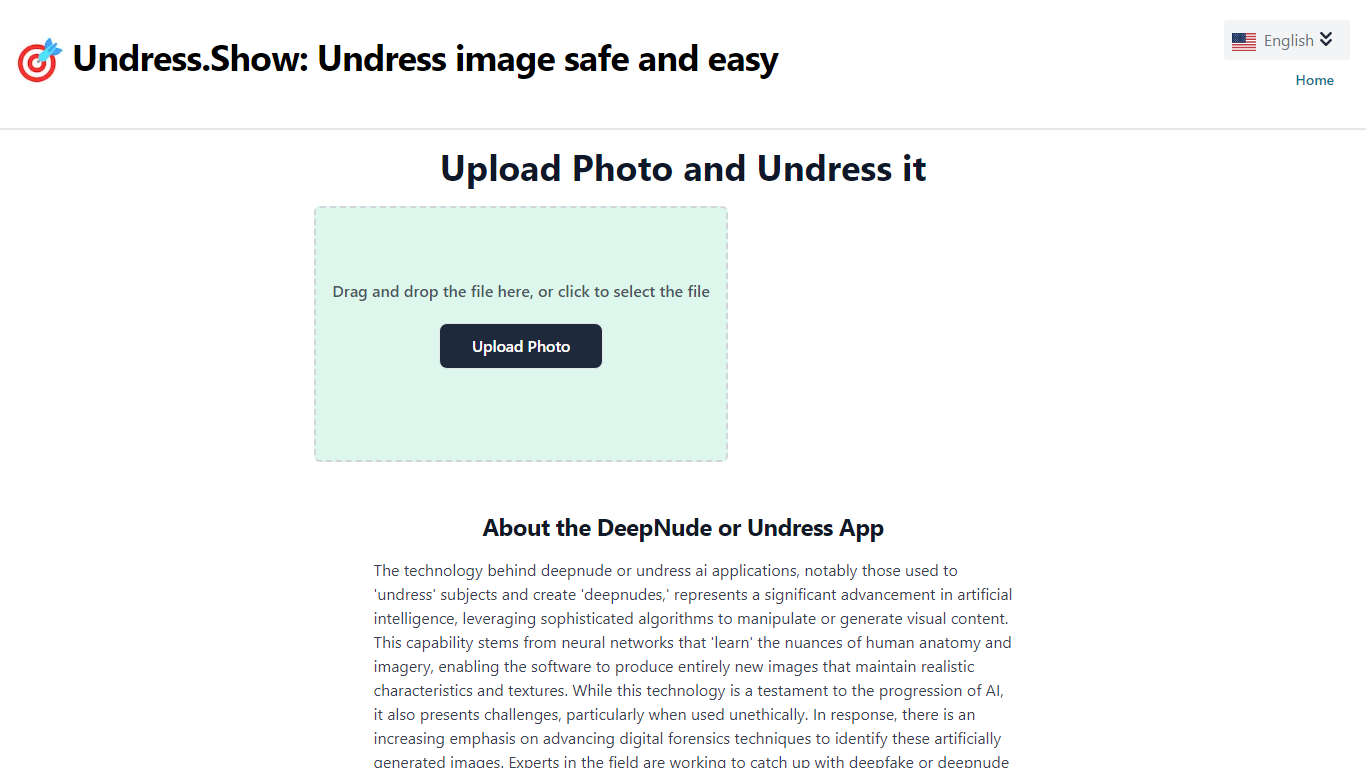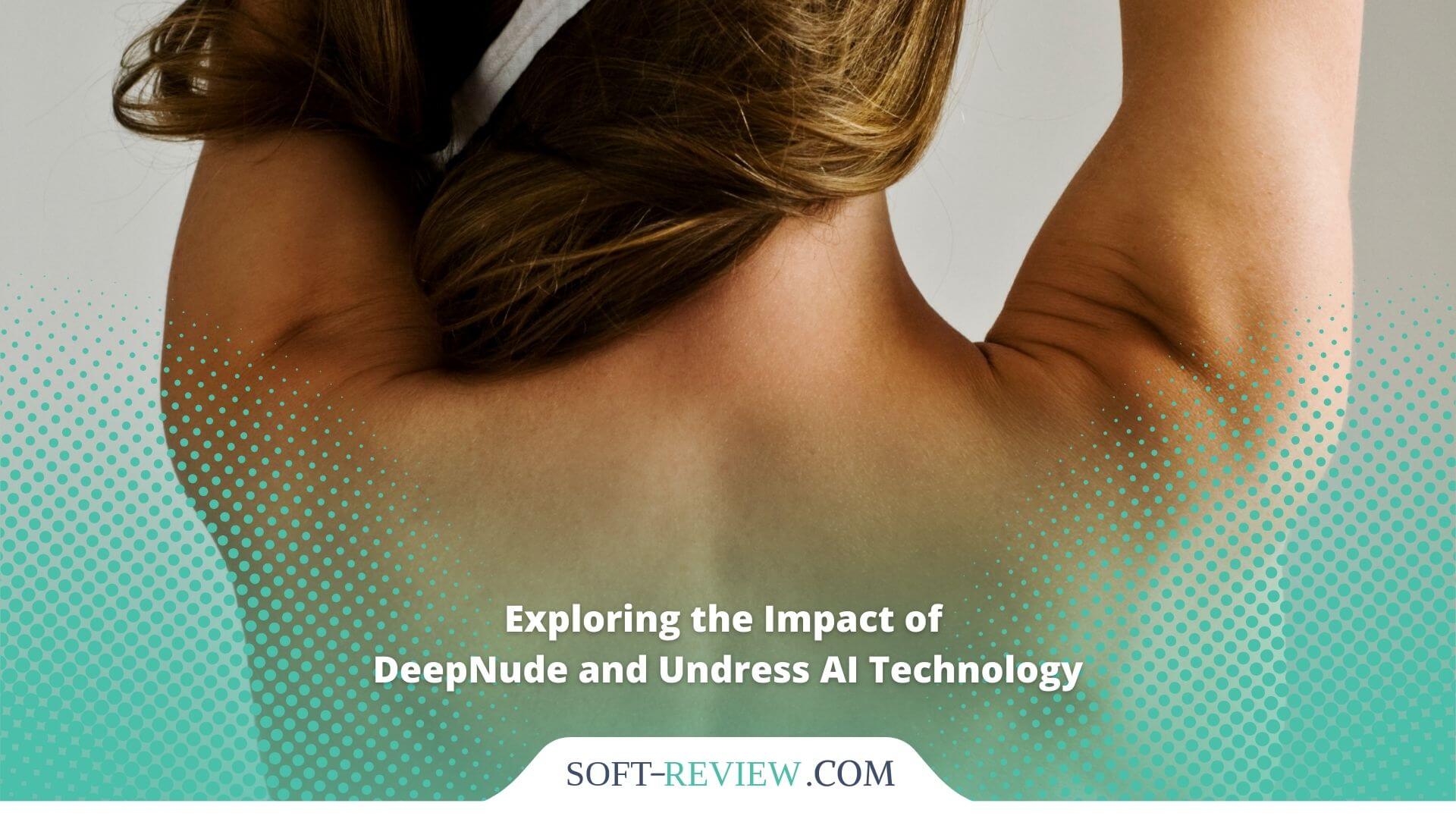Undress AI and DeepNude images have become a controversial topic in recent years, sparking debates about privacy, ethics, and technology. As artificial intelligence continues to evolve, its applications have expanded into areas that raise serious concerns. In this article, we will delve into the world of Undress AI and explore its implications, challenges, and the measures being taken to address these issues.
The rise of Undress AI and DeepNude technology represents a significant shift in how AI is used, often blurring the lines between innovation and misuse. While AI has the potential to revolutionize industries and improve lives, its misuse can lead to severe consequences, particularly when it comes to privacy and consent.
This article aims to provide a thorough understanding of Undress AI, its origins, how it works, and its impact on society. By examining the ethical considerations and the steps being taken to regulate this technology, we hope to empower readers with knowledge and awareness about this controversial subject.
Read also:Maximilian David Anthony A Comprehensive Guide To His Life And Achievements
Table of Contents
- Introduction to Undress AI
- History and Development of Undress AI
- How Undress AI Works
- Ethical Concerns and Implications
- Privacy Issues and Risks
- Legal Challenges and Regulations
- Alternatives and Responsible AI Use
- Public Awareness and Education
- The Future of AI and Privacy
- Conclusion
Introduction to Undress AI
What is Undress AI?
Undress AI refers to a type of artificial intelligence software that uses deep learning algorithms to digitally remove clothing from images of people. This technology has garnered significant attention due to its potential misuse and the ethical dilemmas it raises. The term "DeepNude" is often associated with this type of software, as it was one of the first widely publicized tools in this category.
At its core, Undress AI employs machine learning models trained on vast datasets of images to generate realistic depictions of individuals without clothing. While the technology itself is not inherently malicious, its application in non-consensual scenarios has led to widespread criticism.
Understanding the basics of Undress AI is crucial in addressing the broader implications of AI in society. As we explore this topic further, we will examine how this technology works, its potential misuse, and the measures being taken to mitigate its negative effects.
History and Development of Undress AI
The Origins of DeepNude Technology
The concept of Undress AI emerged with the development of deep learning algorithms capable of generating realistic images. The original DeepNude software, launched in 2019, quickly gained notoriety for its ability to create explicit images of individuals without their consent. Although the creators initially released the software for free, they eventually pulled it due to public backlash and ethical concerns.
Despite the removal of the original DeepNude app, similar tools have continued to emerge, often developed by independent actors or organizations with little regard for ethical guidelines. The evolution of this technology highlights the challenges of regulating AI applications in a rapidly advancing digital landscape.
Understanding the history of Undress AI is essential in addressing the ongoing issues surrounding its use. By examining the origins and development of this technology, we can better appreciate the need for responsible AI development and regulation.
Read also:Unveiling Yoru Chainsaw Man A Deep Dive Into The Character
How Undress AI Works
Deep Learning and Neural Networks
Undress AI relies on deep learning techniques, specifically neural networks, to analyze and manipulate images. These networks are trained on large datasets of images, allowing them to learn patterns and generate realistic outputs. The process involves several key steps:
- Data Collection: Gathering a diverse set of images to train the AI model.
- Preprocessing: Cleaning and preparing the data for analysis.
- Training: Using the data to teach the neural network to recognize patterns and generate outputs.
- Post-processing: Refining the generated images to ensure realism and accuracy.
While the technical aspects of Undress AI are fascinating, they also raise significant ethical and privacy concerns. The ability to create realistic images without consent poses a serious threat to individual privacy and safety.
Ethical Concerns and Implications
The Ethical Dilemmas of Undress AI
The use of Undress AI raises several ethical concerns, particularly regarding consent, privacy, and the potential for misuse. Non-consensual creation and distribution of explicit images can lead to severe emotional distress, reputational damage, and even legal consequences for the victims.
Furthermore, the lack of regulation in this area exacerbates the problem, allowing malicious actors to exploit the technology for personal gain. Addressing these ethical concerns requires a multi-faceted approach, involving both technological solutions and policy interventions.
As society grapples with the implications of Undress AI, it is crucial to prioritize ethical considerations in the development and deployment of AI technologies. By fostering a culture of responsibility and accountability, we can mitigate the negative effects of this technology.
Privacy Issues and Risks
Protecting Individual Privacy
Privacy is a fundamental right that must be safeguarded in the age of AI. Undress AI poses a significant threat to individual privacy, as it enables the creation of explicit images without the subject's knowledge or consent. This technology can be used to exploit vulnerable populations, perpetuate harassment, and undermine trust in digital platforms.
To address these risks, it is essential to implement robust privacy measures, such as encryption, data anonymization, and access controls. Additionally, raising public awareness about the dangers of Undress AI can empower individuals to protect their personal information and advocate for stronger privacy protections.
By prioritizing privacy in AI development, we can ensure that technological advancements do not come at the expense of individual rights and freedoms.
Legal Challenges and Regulations
Addressing the Legal Implications
The legal landscape surrounding Undress AI is complex and evolving. While some jurisdictions have enacted laws to address the misuse of AI-generated content, others lag behind in implementing effective regulations. Key legal challenges include:
- Defining the scope of consent in digital contexts.
- Establishing liability for the creation and distribution of non-consensual content.
- Ensuring compliance with existing privacy and data protection laws.
As lawmakers and regulators work to address these challenges, it is crucial to strike a balance between fostering innovation and protecting individual rights. By collaborating with stakeholders across industries, governments can develop comprehensive frameworks to govern the use of AI technologies like Undress AI.
Alternatives and Responsible AI Use
Promoting Ethical AI Development
In response to the concerns surrounding Undress AI, many organizations and researchers are exploring alternative approaches to AI development that prioritize ethics and responsibility. These efforts include:
- Developing AI models with built-in safeguards to prevent misuse.
- Encouraging transparency and accountability in AI research and development.
- Fostering collaboration between industry, academia, and government to establish best practices.
By promoting responsible AI use, we can harness the benefits of this technology while minimizing its risks. Embracing ethical principles in AI development is essential for building trust and ensuring that technological advancements serve the greater good.
Public Awareness and Education
Raising Awareness About Undress AI
Public awareness plays a critical role in addressing the challenges posed by Undress AI. Educating individuals about the potential risks and implications of this technology empowers them to make informed decisions and advocate for stronger protections. Key strategies for raising awareness include:
- Conducting public awareness campaigns to highlight the dangers of non-consensual content.
- Providing resources and tools to help individuals protect their personal information.
- Encouraging open dialogue about the ethical and societal implications of AI technologies.
By fostering a culture of awareness and responsibility, we can create a safer and more equitable digital environment for everyone.
The Future of AI and Privacy
Shaping the Future of AI
As AI continues to evolve, its impact on privacy and society will only grow more significant. The future of AI and privacy depends on our ability to address the challenges posed by technologies like Undress AI while embracing the opportunities they present. Key priorities for the future include:
- Developing robust regulatory frameworks to govern AI applications.
- Investing in research and development of ethical AI technologies.
- Empowering individuals through education and awareness initiatives.
By working together to shape the future of AI, we can ensure that this powerful technology is used responsibly and for the benefit of all.
Conclusion
In conclusion, Undress AI and DeepNude images represent a significant challenge in the realm of AI and privacy. While the technology itself is a testament to the capabilities of artificial intelligence, its potential misuse raises serious ethical and societal concerns. By understanding the origins, workings, and implications of Undress AI, we can better address the challenges it poses and work towards a more responsible and equitable digital future.
We invite you to share your thoughts and insights in the comments below. Additionally, consider exploring other articles on our site to deepen your understanding of AI and its impact on society. Together, we can foster a culture of responsibility and innovation in the age of artificial intelligence.


